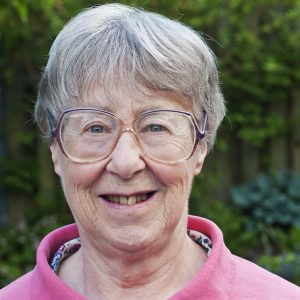By Philippa Kiraly, Special to The Sybaritic Singer
Appropriately for Halloween, Emerald City Music chose on Friday night at 315 Westlake to perform a work completely in the dark, as stipulated by the composer. Georg Friedrich Haas wrote his third String Quartet, In iij Noct., in 2001 and it has had a compelling fascination for performers ever since, with multiple performances in many countries. The title comes from the Third Nocturn of the Catholic Tenebrae services, which are often held in darkness in the days before Easter.
This work seems not to have any religious connotation. The composer decrees that the performers must be as far away from each other as possible. They communicate more by telepathy and prior understanding than anything else, though they have clearly had multiple rehearsals beforehand in order to internalize what Haas is after. The work is punctuated by long pauses between what he calls situations, we might call them sections, in which the performers use a snippet to invite the others to join in, which maybe they do, or don’t. Haas has a clear framework for the performers to work from, though this is indecipherable to the audience. Much of the piece is improvisatory, and we were told it can last from 45- 75 minutes. Friday lasted about 50, though it seemed less.
Haas insists that the darkness be complete. It almost was, Friday, though there was reflected streetlight dimly seen though clerestory windows. It was enough that one could not see the outline of a person sitting immediately in front.
The lightless feel was tested in the audience first for a few measures of music, after which anyone feeling claustrophobic had a chance to leave. When the work began in earnest, it felt to this listener like a tropical forest at night, not overloud, but there were sudden squawks and shrieks, rattles and knocking like a woodpecker on wood, each sound distinct and alone until the next. There were creaking or groaning sounds, like ancient tree branches in the wind, and plucked string playing, some of it ebullient like a large ball bouncing down note or pitch steps, or a smaller ball on a lower set of steps, some of it more hushed, like rain pattering on leaves. There were drumming beats on the cello, and later sounds such as elephants shuffling along, step by heavy step, plus slithers down a slope, shrill high calls and, occasionally, a long clear note, all of this without time or key definition. The whole became hypnotic to the ears.
The close-packed audience was the quietest I’ve ever heard—no coughs or sneezes, nose blowing or shuffling, only one cleared throat though the whole work.
Probably everybody heard it differently. Where I heard it pictorially, my seat neighbor heard it analytically, noting the microtones.
Afterwards, the four performers held a question and answer session. Violinists Siwoo Kim and Kristin Lee, co-founder of ECM, violist Jack Stulz and cellist Mihai Marica explained some of their methods of putting this work together, including wearing blindfolds. Lee mentioned how confused and daunted she had felt at the outset. One commented that not seeing made their hearing doubly acute. Summing up one of them said “It’s designed so you don’t really fall apart. The way he wrote it, you can’t really do anything wrong,” and went on to say he loves practicing in the dark, especially Bach!
 Philippa Kiraly has been writing classical music criticism since 1980, for several newspapers in northern Ohio and Seattle, magazines, both local and national, and blogs. She is passionate about the importance of independent criticism for the fine arts, an art in itself which is dying with little interest by many publications and no longer a viable career for most. But writing for tickets is always worthwhile!
Philippa Kiraly has been writing classical music criticism since 1980, for several newspapers in northern Ohio and Seattle, magazines, both local and national, and blogs. She is passionate about the importance of independent criticism for the fine arts, an art in itself which is dying with little interest by many publications and no longer a viable career for most. But writing for tickets is always worthwhile!
Pippa is a keen gardener, a keen grandparent, and can get lost in a good book.
